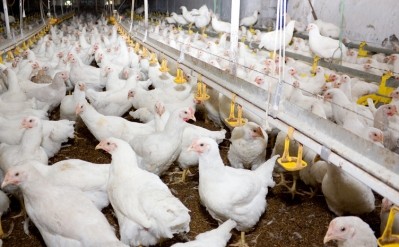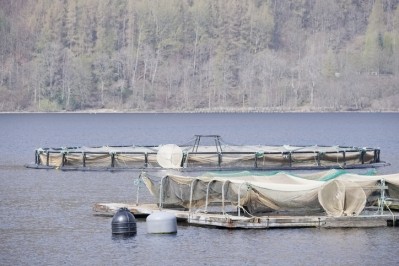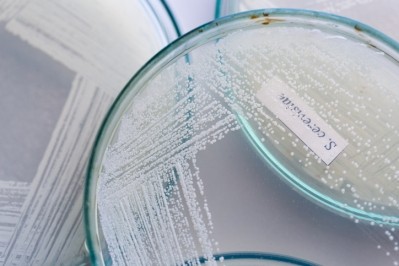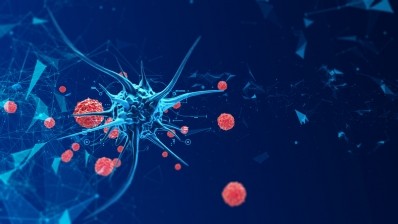Functionality of yeast fractions in aqua feed: Lallemand exploring the use of functional feeds in salmonids
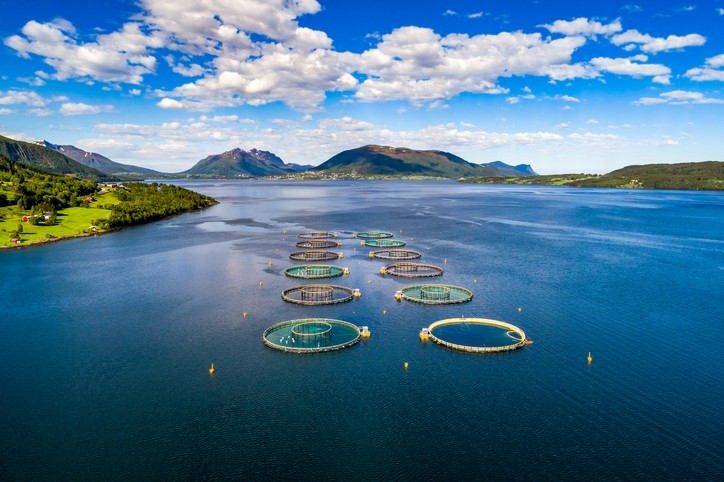
Functional feeds are an essential component of modern aqua feed to support a responsible and high-performing industry, said Eric Leclercq, aquaculture technical support and R&D manager, Lallemand Animal Nutrition.
Lallemand has screened a large panel of different yeast species for their morpho-functional and capacity to interact with different host immune pathways in fish, he told us.
“Based on this knowledge, we can combine different yeast fractions that will interact with a broader panel of host immune receptors, generating enhanced and balanced (multi-pathway) immune modulation at a low in-feed incorporation rate.”
EAS 2018
At EAS/Aqua 2018 in Montpellier, France, the company presented a range of studies focused on fish mucosal surfaces.
Gill, skin and intestinal mucosal surfaces are the first line of defence against pathogens, physical disruption and environmental harmful factors, said Leclercq. However, those tissues are also constantly exposed to a vast number of potential pathogens and non-infectious disrupting factors, such as physical transfer or chemical exposure during production, he said.
Hence the focus of Lallemand’s research.
He talked us through the findings of the various yeast fraction trial work presented at the Montpellier conference.
Trout trial
One study related to a trial done in rainbow trout, with a duration of a few weeks, whereby a multi-strain yeast fraction product from Lallemand - selected inactivated yeast strains of Saccharomyces cerevisiae and Cyberlindnera jadinii – was tested.
The trial, carried out at the University of Plymouth in the UK, showed the supplement had a positive effect on mucosal barrier protection at the gut and skin level, said Leclercq.
Skin mucus level was around 30% higher with the yeast derivative, he continued.
Gene expression analysis revealed a broad and balanced activation of the fish’s gut innate and adaptive immune responses improving the company’s understanding of the specific immunomodulatory properties of the multi-strain yeast fraction tested, said Leclercq.
“The trout study [presented at EAS] was the first in-vivo assay in fish [in relation to the multi-strain yeast fraction].
“Looking at the panel of immune biomarkers, [the study showed] the product was highly efficient in activating a range of immune pathways.
“We have seen [an effect] at the intestinal level, and at the skin level.
“It shows, in particular, activation of the toll-like receptors (TLRs) immune pathway at skin mucosal level and at a low in-feed incorporation rate,” he said.
Seabream study
Another trial was done on the same multi-strain yeast fraction product, this time in juvenile gilthead seabream, he told us.
The researchers, that time, looked to investigate the effects of a novel yeast-based functional ingredient in that species with the aim of enhancing mucosal protection.
“This study was carried out subsequently [to the trout one] and was more applied; we wanted to validate the same product concept in this Mediterranean species, we also want to look at mucin expression in genes in the intestinal, gill and skin tissue.”
The study showed a strong positive effect on skin mucus quantity and quality associated with, in particular, a significant up-regulation of selected mucin genes involved in physical integrity and protection against potential pathogens at the mucosal level, he said.
He said the results indicate the potential of this functional ingredient at mitigating pathogens and/or physical insults during challenging rearing or transfer periods.
“We didn’t see any negative impact on growth. The point of this product is to improve immunity, which has an energy cost. So, if we can improve immunity without negatively affecting growth, it is of high value.”
Both studies furthered the company’s understanding of how the multi-strain yeast product works in terms of enhancing fish immunity, he said.
Joint research project with BioMar
However, the company wanted to dig deeper on mode of action, and it collaborated with Danish fish feed company, BioMar, and the University of Plymouth on a joint PhD project to analyze the effect of that same multi-strain yeast product on immunomodulation in Atlantic salmon, both alone and in combination with a commercial probiotic as a synbiotic (Syn).
The PhD student in question, he said, developed a high throughput real-time qPCR assay technique to analyze the effect of the product on the expression of 62-targeted genes implicated in mucosal responses, cell-mediated immunity, stress and humoral immunity.
The genomic technology developed is designed to understand, in particular, the immunomodulatory effects and downstream signaling cascades activated at the mucosal level, he said.
“We looked at the effect of the product on immunity, gut permeability, and cellular integrity, in the gut and skin, [and, thus, protection against bacterial invasion.]”
A trial was conducted under semi-commercial conditions in Scotland, using Atlantic salmon post-smolts in open cages. The fish were fed the dietary regimes in triplicate, testing multi-strain yeast fraction product alone and in combination with a probiotic (Bactocell).
Standard lateral skin-wipes were performed to collect epidermal mucus for quantity analysis; samples of skin, gill and intestine were collected for gene expression at two successive time points.
A similar positive effect on skin mucus quantity was observed for both test diets at both time points, after eight and 14 weeks feeding in seawater, he said.
Upregulation of a number of genes associated with mucin production and tight junction permeability was observed in the gills and skin suggestive of a stimulatory effect upon the mucosal responses, especially in regard to the fish fed the multi-strain yeast fraction product and probiotic in combination, he continued.
“We saw an upregulation of mucins, which again does suggest higher mucus secretion and some immune related changes, a positive effect on innate immunity at the gill and mucosal levels.”
Follow-up
The team is still interpreting all the data collated as part of this study, he said.
“There is a lot of work involved. The PhD student is continuing to consolidate and digest the findings.
“[The trial] gave us a lot of trust in the product, [we saw] an effect on mucus quantity and quality, on gene expression and on cellular health.”
The genomic technology is a cost-effective way of narrowing down the field in terms of where to concentrate Lallemand’s efforts now in terms of further exploration of mode of action of the multi-strain yeast fraction, he said.
The idea, going forward then, is to continue to understand how the product works, its effect at the physiological, molecular and protein level in fish, said Leclercq
Functional feeds and sea lice
Sea lice (Lepeophtheirus salmonis, Lep, and Caligus elongatus) are a persistent problem for the European salmon industry. The use of in-feed functional compounds and yeast cell wall fractions against these ectoparasites has shown some mixed results to date, said Lallemand.
In that context, Leclercq said Lallemand wanted to test a currently available technology - a well-known, long-studied single-strain yeast fraction (SsYF) product - on Atlantic salmon post-smolt performance, sea lice settlement and skin mucosal barrier.
Feedback from farmers was that this single strain yeast fraction, rich in mannan-oligosaccharides, worked well; they could see benefit, he said.
“However, sometimes it is good to go to the basics, and we wanted to keep confirming that it works on specific applications.”
What was the indicator it might reduce susceptibility of Atlantic salmon to sea lice?
“We know there is some level of immune interaction in the host as regard this product, given that it is a yeast fraction, so there will be some level of defense again pathogens. The key reason we thought the single strain could help in terms of a sea lice challenge infection was based on previous experiments backed up by customer feedback.
“Sea lice is big problem; Functional feeds tend to fall below the radar when it comes to sea lice, but the benefits of functional feeds, in this regard, is that there is continuous impact, much like cleaner fish, they can be used throughout a cycle, preventively, to minimize sea lice infection, hopefully,” he stressed.
He said a 10-week tank-based trial was conducted in Scotland using Atlantic salmon post-smolts, testing the effects of the single-strain yeast fraction product, on sea lice at two (chalimus stage) and four weeks (motile stage) post-challenge.
Specific growth rate was numerically improved for fish fed the functional diet, showing significantly fewer settled chalimus compared to the control. Furthermore, the diet was associated with a significant or trend increase in skin mucus quantity and lysozyme activity, he said.
The data also supported the positive contribution of a SsYF product on the growth, skin mucosal barrier and mitigation of Lep settlement in Atlantic salmon, he added.
“We saw no negative impact of the product on growth, a very good finding. We see a higher level of skin mucus quantity, an increase in the secretion of mucus on the skin of the fish.
“Two weeks after the sea lice challenge, we found less chalimus on the fish. Four weeks later, the lice move onto the adult stage, and we saw a lower lice level.”
The trial then, he said, showed accumulative benefits against lice propagation over the rearing cycle - continuous usage of the product saw ongoing reduction over successive lice waves.
The single strain yeast fraction, he stressed, is just one tool, however, in the fight against lice, but it may have the effect of minimizing the frequency of heavier interventions such as veterinary treatment, a chemical bath, or mechanical delousing.
